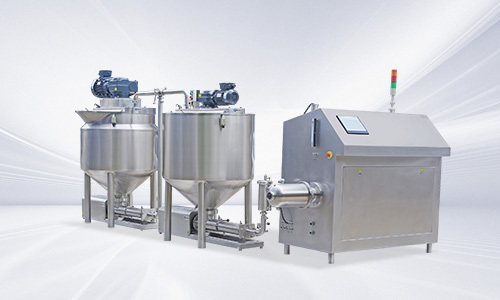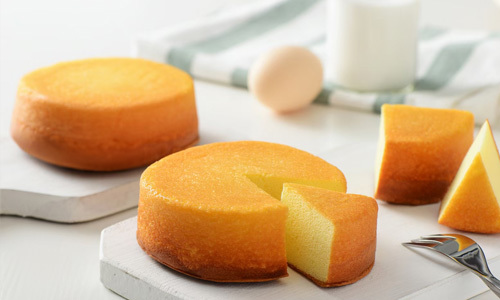Company News
LATEST NEWS

The influence of candy forming machine in candy machinery
2020-12-24
The candy forming machine is a kind of hard candy production equipment with simple structure, good performance, easy operation and high production efficiency. The machine can be used with different sp
View in detail.
The history of candy and the future of candy machinery
2020-12-24
The development of China's candy mechanization is decades later than that of foreign countries, but the domestic candy machinery is developing at an astonishing speed, which is inseparable from certain domestic folk customs. Chinese people like to choose colorful candies to express their blessings to family and friends on festivals or on changed days. With exquisite packaging and sweet taste, people are more excited when they are happy. And candy has a long history and profound culture. In ancient times, people always like to use honey to make candies. The earliest icing appeared in Rome, called almond candies. At that time, the price of candy was scary, and generally only the nobles could afford it. Later, with the rise of colonies and the widespread cultivation of sugarcane, sucrose, a raw material for sugar, became more widespread. Merchants began to use it to test various candy recipes. The manufactured candies are much cheaper, and then mass-produced and sold all over the world. With the progress of the times and the development of science and technology, my country's food industry has also bought a fast-growing channel, and my country's confectionery industry has continued to improve, with new products changing with each passing day and a wide variety of varieties. So far, my country has become the world's second largest confectionery market. These awards also make the national team candy machinery put forward more and higher requirements. Confectionery machinery equipment is divided into pouring machine, sugar pot, sugar pot, filling machine, soft and hard candy production line, candy packaging equipment and so on. The various parts of the candy machine play different roles. Why should candy be packaged? Because packaging is beneficial to moisture and heat insulation of candy products, it helps to prevent oxidation of product oils and prolong the life of candy. Of course, packaging is also conducive to protecting candy, preventing microbial and dust pollution, and protecting product hygiene and safety. In addition, the more beautifully packaged products can attract consumers' desires. At present, the packaging forms of domestic confectionery products include twist packaging, pillow packaging, and folding envelope packaging. With the rapid development of the domestic confectionery industry, the competition among confectionery companies is becoming increasingly fierce. Confectionery companies want to gain a place and must adapt to changes in the current market demand. In addition to paying attention to product quality, they also need to pay attention to field-frequency packaging. To occupy a stable position in an increasingly competitive market, we must meet the changes in market demand. In addition to improving production efficiency and product quality, we must also package products beautifully and use high-tech machinery, such as low-temperature sealing packaging film materials and twisting packaging film materials. , Re-sealing the packaging face material film, so as to shorten the gap between domestic manufacturers and developed countries. The development trend of domestic confectionery machines is bound to change from the packaging of confectionery, and the reform direction of confectionery packaging must move towards high-speed automation, multi-functionality of one machine and characteristic packaging design. I believe that with the development of informatization, China's confectionery enterprises will develop faster and faster, and drive the development of the entire confectionery machinery industry. In the near future, we may become the world's largest candy market, because we have 1.3 billion people who love candy.
View in detail.
Founded in Guangdong, China: Foshan yalus Industrial Equipment Co., Ltd
2020-12-23
Foshan aero Industrial Equipment Co., Ltd. is a professional manufacturer of industrial equipment and technical services in Hong Kong.
View in detail.
The new development of the confectionery industry the application of sugar-free confectionery
2020-12-23
Before the Han Dynasty in my country, sweets made from grains and potato starches were named "Yi". In foreign countries, it is said that the Egyptians used honey, figs, dates, etc. to make simple candies in 1000 BC. In Europe, first in the area around Rome, manufacturers wrapped an almond with honey and dried it in the sun to obtain the dragee. After that, in 1600, the French successfully coated the surface of almonds with multiple solid sugar coatings. In 1701, nougat appeared in France. Since then, apple candy (maltose with apple sauce added) has also appeared. However, due to the high price, until the 18th century, only nobles could taste sweets. In the middle of the 18th century, the Germans succeeded in extracting granulated sugar from sugar beets. After that, with the rise of colonial trade, cane sugar became popular, and many candy manufacturers began mass production of candies, and candy began to enter the lives of ordinary people. In the middle of the 20th century, the modern confectionery industry began to develop. Confectionery technologists, chemists and engineers introduced the achievements of modern science and technology into the ancient confectionery production. Various advanced technologies have enabled the production of various confectionery to be continuous, automated, and The age of computerization. With the rapid development of the confectionery industry, dental problems caused by sugar consumption have gradually emerged. In urban children, because they eat too much sugar, their teeth are rarely intact. Doctors and scientists are beginning to realize the connection between sucrose and dental caries. In the 1970s, as the influence of sucrose on the formation of dental caries became increasingly recognized, the development of sugar-free candy became the direction of the development of the candy industry. In the 1970s, the United States used xylitol, sorbitol and other non-sucrose raw materials to produce gums. Since then, more and more candies have replaced sucrose. Sugar alcohols have become the main reason for their good flavor, low calorific value and anti-caries effect. The main raw material for sugar-free candy. In order to solve the dental caries problem caused by traditional candies, a new type of sugar-free candies produced with xylitol and maltitol as raw materials using a casting process have emerged. The process flow is as follows: The formula of sugar-free candy: 4kg xylitol, 6kg maltitol, 5-6g flavoring, 21g citric acid, and appropriate amount of food coloring. The produced candy carbohydrate has a glossy appearance and a hard texture. It is divided into three layers. The upper and lower layers of maltitol wrap the xylitol in the middle, and the shape is oval, which is very beautiful. Using xylitol and maltitol as raw materials to produce sugar-free candies, with low sweetness, a clear cooling sensation in the mouth, fresh and unique flavor, suitable for all ages, especially suitable for sucrose taboos and children to prevent dental caries. Candies produced by using sugar alcohols as raw materials can effectively prevent dental caries and stabilize blood sugar. It not only retains the excellent sweetness of traditional candies, but also highlights the functionality and health of candies.
View in detail.







